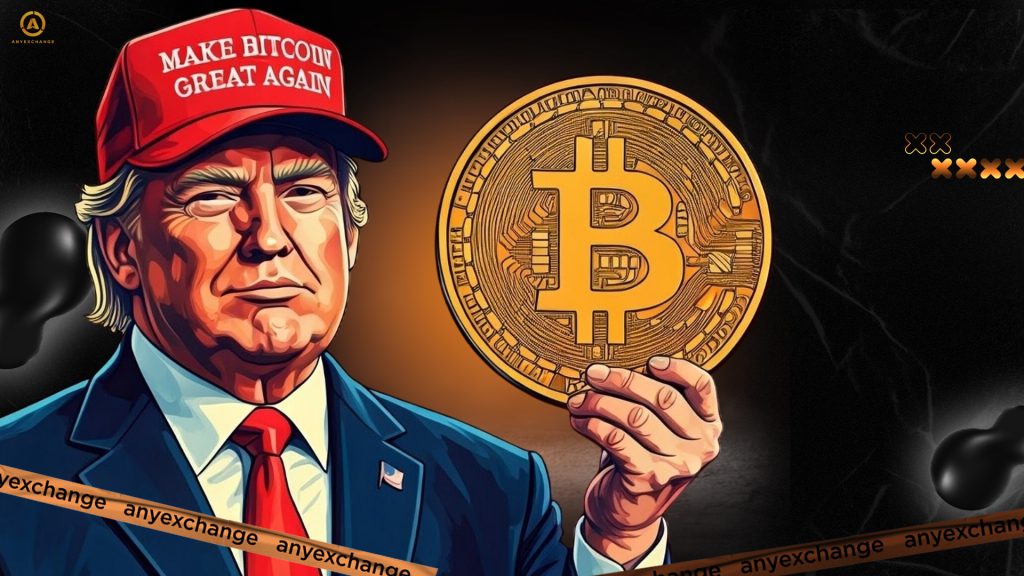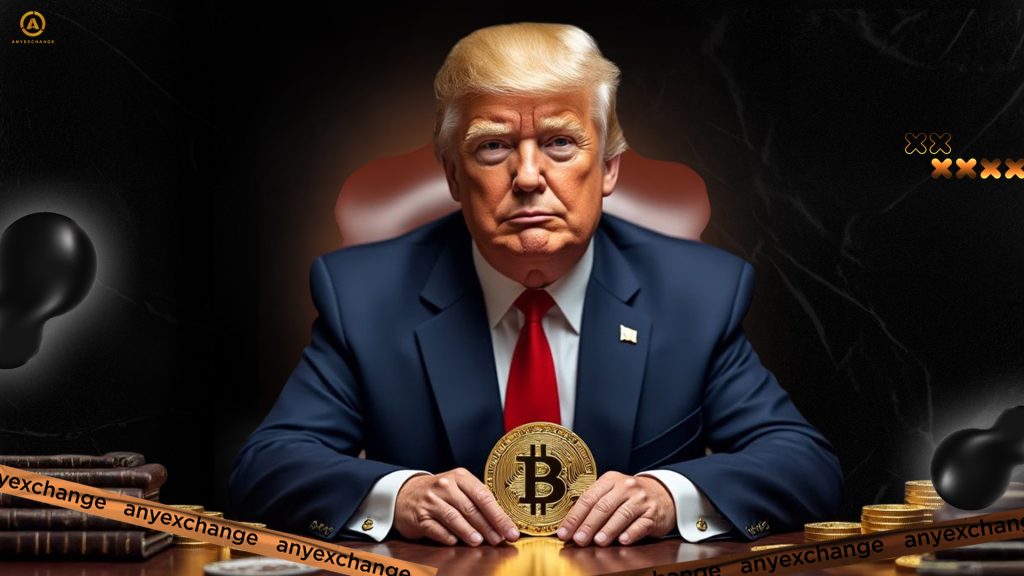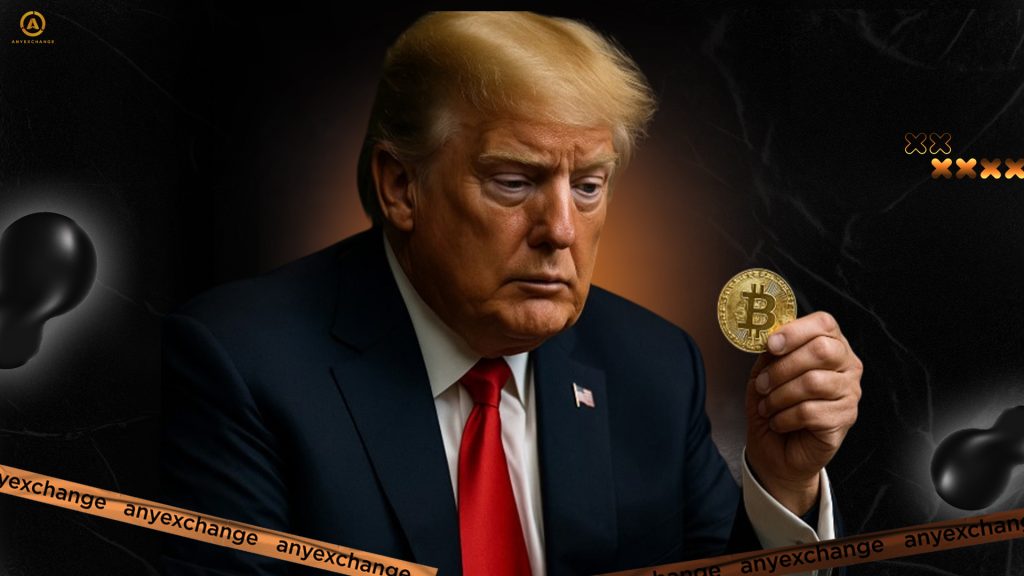
Bitcoin surpassed the $100,000 mark just a month after Donald Trump’s victory in the November 2024 presidential election, not after years of his presidency. On election day, November 5, Bitcoin (BTC) was trading at $69,000. By December 5, its price had risen by more than 30%, surpassing the $100,000 mark. By May 2025, the price of Bitcoin reached a new record high of $112,000, showing growth of over 60% in six months.
Irony? Back in 2021, Trump called cryptocurrencies a “scam,” yet in 2024, he promised to make the US the “crypto capital of the world.”
Trump’s evolution on digital assets is a drama in three acts: total denial, sudden insight, and ardent support. Inspired by donations from crypto exchanges and an army of court meme coins, Trump radically changed his point of view. He began making statements about his full support for the industry, his plans to ease cryptocurrency regulations in the US, his intention to change the leadership of the SEC, and his idea to create a strategic reserve of Bitcoin.
Jokes aside, Trump’s crypto policy is not just fodder for internet memes; it could also fundamentally change the rules of the game. New executive orders, unexpected appointments, and deregulation could trigger the growth of Bitcoin and the entire crypto sector if he returns to the White House.
Trump’s Changing Position on Cryptocurrencies

From “fraud” to “the future of finance”
From 2019 to 2021, the former president repeatedly made harsh statements. He declared that he was “not a fan of Bitcoin and other cryptocurrencies” and angrily denounced their use for “illegal activities, including drug trafficking.” After leaving office, he called cryptocurrencies “fraud” and a threat to the US dollar. In Trump’s rhetoric, there was no place for blockchain policy or crypto innovation — only the fiat dollar, only hardcore.
But suddenly, something changed. Even before the election, Trump’s influence on the crypto market was already being felt. The presidential candidate had rapidly rebranded himself as a fierce supporter of crypto populism. He spoke enthusiastically at the Bitcoin 2024 Conference, declaring that, under his leadership, cryptocurrencies in the U.S. would “grow like yeast.” It wasn’t just a turnaround; it was an impressive feat designed to delight voters.
What prompted Trump’s “epiphany”? First and foremost were the generous donations from the crypto business. According to election commissions, he became the largest recipient of donations from the crypto industry in 2024. Additionally, there was an intensified struggle with the Biden administration, which pursued an aggressive SEC policy. This confrontation provided Trump with a convenient excuse to “free the U.S. crypto industry from regulatory oppression.” This is how Trump’s image as the sector’s defender and inspiration emerged, expressed through his promises of full support for cryptocurrencies.
Trump’s Key Initiatives

From decrees to crypto reserves
Trump’s return to the White House began with more than just tweets; he took concrete steps as well. One of his first executive orders, issued in January 2025, established a working group on digital assets tasked with developing the world’s best regulatory environment for blockchain startups. Essentially, this was Trump’s approval of DeFi projects, NFTs, stablecoins, and the entire American crypto industry.
This was followed by an even more ambitious step: an initiative to establish a cryptocurrency reserve. It sounds something like “Treasury 2.0” — if China and the UAE have gold, then the US should have blockchain.
Personnel decisions were no less high-profile. Paul Atkins, a vocal opponent of Gary Gensler, was nominated to lead the SEC. David Sachs, a well-known investor with access to Silicon Valley venture chat rooms and pro-Trump Telegram channels, became the unofficial “crypto and AI czar.” These appointments excited cryptocurrency supporters and caused quiet panic among the SEC.
Thus, Trump’s crypto regulation became something of a libertarian dream: fewer rules, more freedom, crypto in the Fed, and Atkins as chief supervisor. If something goes wrong, the “deep bureaucracy” will be to blame.
Impact on the Сrypto Market
From Words to Action
Trump’s election victory was a real catalyst for the crypto market. Bitcoin (BTC) soared, breaking through all key resistance levels and causing a wave of FOMO (fear of missing out) among institutional investors. In May 2025, six months into Trump’s presidency, Bitcoin reached an all-time high, followed by other assets, such as Ethereum, Dogecoin, Solana, XRP, and Cardano. Meme coins also gained new momentum amid the media hype surrounding the imposing figure of the old-new president.
This market behavior is a natural reaction to the signal. Trump’s popularity and Bitcoin’s growth now go hand in hand. Tired of the SEC’s pressure under Biden, institutional investors have begun to return. Large hedge funds are investing in cryptocurrencies again, and banks are offering custodial solutions for digital assets. JPMorgan, BNY Mellon, Citi, and other major banks have launched crypto custodial services.
However, not everyone has welcomed the changes with enthusiasm. Some analysts warn that a rapid rise in prices is not a sign of reform but rather speculation based on rhetoric. Trump’s crypto policy remains largely declarative, and a sharp price increase is not necessarily a sign of fundamental change. More often, it is the result of short-term price inflation against the backdrop of loud promises. For example, an expert from Galaxy Digital said: “If Trump forgets about the market as quickly as he changes his mind, we are in for the most expensive rebound in crypto history.”
This effect is also noticeable on the international stage. Following American initiatives, Saudi Arabia, Singapore, and other countries have announced plans to explore creating crypto reserves. Clearly, the impact of the election on the crypto market has gone far beyond the US.
Trump’s Personal Projects and Conflicts of Interest
Where politics begins and decentralization ends
Trump and his entourage continue to actively participate in the crypto economy. A whole family of memecoins directly or indirectly related to the president has appeared on the market, including $TRUMP, MAGACOIN, TROG, MELANIA, and DJT. Each coin soars and falls according to the laws of hype and posts on the X network. Although their connection to Trump has not been officially confirmed, the public perceives them as part of his “crypto activity.” When $TRUMP appeared in 2024, the meme coin instantly hit the exchanges. Within a couple of months, it demonstrated volatility worthy of the president’s Twitter page, ranging from a +600% increase per day to a -40% decrease per week. Melania Trump soon followed suit with her NFTs and stablecoin, Melania Coin. All of this is happening at a time when Trump himself is promising to “clean up” crypto regulation.
There’s more to come. In early 2025, Trump unveiled the World Liberty Financial project in partnership with his sons. This DeFi platform is designed to “restore financial freedom to Americans.” Essentially, it’s a combination of staking, NFT banking, and tokenized patriotism, backed by investments from controversial figures like Justin Sun. While some saw this as technological progress, the vast majority viewed it as a conflict of interest: the head of state developing private crypto projects while simultaneously regulating them. The ethical risks are obvious. Can a state leader promote stablecoins under his own name while his administration decides the fate of similar products? Or build platforms that are “suddenly” granted licenses?
Thus, Trump’s policy on cryptocurrencies promises the market not only price growth but also an unsafe game in which the president of the world’s largest economy becomes his own memecoin, trading platform, investor, and regulator.
Forecasts and Prospects
Promises, fog, and uncertainty
Like his policies, Trump’s rhetoric can change direction overnight. Today, he is the savior of cryptocurrencies; tomorrow, he may claim that “Bitcoin threatens the dollar.” Therefore, Trump’s influence on the 2025 crypto market forecast is less about planned actions and more about emotional swings. The market reacts to every statement, and investors are learning to read between the lines.
Currently, the sector is comforted by the fact that Trump is keeping his word. At least as far as the deregulation of the crypto industry is concerned, the SEC has softened its stance on decentralized finance (DeFi) and digital asset exchanges, and the Treasury Department has proposed a pilot program for stablecoins issued by private companies. However, some experts believe that such liberalism could backfire. If the bubble of overvalued crypto assets were to burst again, as it did in 2022, the financial consequences would be much more painful. Thus, the development of the US crypto sector under Trump is less a strategy than an attempt to hit a constantly moving target. What his advisors write, who calls him last, and what news catches his eye will largely determine the situation with crypto innovations in 2025. The American blockchain technology and digital asset sector will undoubtedly develop rapidly but will constantly look over its shoulder to see if the “boss” has changed his mind.
Conclusion
America is great again… and too volatile
Trump’s policy on cryptocurrencies is an explosive mix of deregulation, media influence, memes, and the ambition to build a strategic Bitcoin reserve. All of this is a powerful stimulus for the crypto market. However, risks lie behind the growth: conflicts of interest, market overheating, exchange rate instability, and political instability.
Those involved in digital assets must pay close attention to new decrees, high-profile appointments, sharp price reversals, and …Trump’s tweets on the internet. In this cycle, the US president may act not only as a representative of the authorities but also as an influential participant in the industry, acting in his own interests and in a highly emotional manner.
Perhaps the Trump administration and Bitcoin will open a new chapter in the history of cryptocurrencies and turn the US into the crypto capital of the world, as Trump promised. However, it will be a difficult path at the crossroads of progress and arbitrariness. Therefore, remember that even in a bull market, Trump could easily press “Dump” instead of “To the Moon” at any moment depending on his mood.
Thank you for your attention. Invest safely and profitably!
AnyExchange is an exchanger that allows you to convert cryptocurrency at the most favorable rates and make fast money transfers around the world.
FAQ
How did Trump’s policies affect the price of Bitcoin?
Following Trump’s victory in the 2024 election, Bitcoin grew by over 70% in six weeks and continued to strengthen its position.
What is the US strategic crypto reserve?
It is a Trump administration initiative to purchase and store digital assets as a state reserve. The reserve is intended to serve as a “financial safety net” in the event of global economic turmoil.
Why did Trump change his mind about cryptocurrencies?
His sharp change in rhetoric is linked to the crypto industry’s growing influence, large donations during the election campaign, and his desire to oppose Biden-era regulations (e.g., the “Trump vs. SEC” campaign).
Which cryptocurrencies does the Trump administration support?
The administration prioritizes BTC, Ethereum, Solana, XRP, and Cardano. Stablecoins issued by American companies are also viewed positively.
What are the risks of investing in Trump’s memecoins?
Coins such as $TRUMP are speculative assets with high volatility and limited liquidity. They have no fundamental value.
Will Trump’s policies affect the global crypto market?
Yes, as the US remains the main driver of the industry. Any steps the US takes to deregulate, support decentralized finance (DeFi), and institutionalize crypto assets create trends that other countries follow.
What does the Digital Asset Working Group do?
The group is tasked with developing new crypto regulations, including DeFi licensing, token taxation, and international AML/KYC cooperation.
How will SEC deregulation change the crypto industry?
Reduced pressure on crypto exchanges, relaxed token requirements, and the review of old lawsuits have already led to increased activity. However, critics fear that this could weaken investor protection.
Can cryptocurrencies rеplace the US dollar?
Trump has stated that he will not allow the “erosion of the dollar’s role,” yet he supports the development of stablecoins and international settlements in cryptocurrency. If this trend continues, the dollar’s status as a global currency will be called into question.
What are the ethical implications of Trump’s projects?
Trump’s crypto startups raise ethical questions. His creation of coins and DeFi platforms, along with his ability to influence regulation within the framework of his presidential powers, raises many questions among the public.





